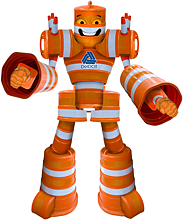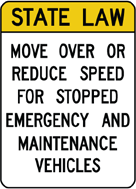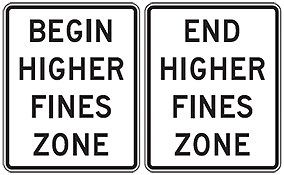Designing Safer Work Zones
Slow Down, We have families too!
We have families too, so slow down in work zones! It is important for motorists to slow down and drive cautiously through work zones. Many Delaware moms, dads, grandparents, friends and neighbors are working on our roadways to make them safer and more efficient for our fellow Delawareans and we want to get home safely to our families every night. When you see orange, slow down, pay attention and expect the unexpected. Let's work together and aim for zero fatalities in work zones!

It's important for everyone to make work zone safety a priority every time we get into our vehicles. Both motorists and workers are at risk. For every person killed or injured in a work zone crash, there are dozens of family members and friends whose lives are also changed forever. So whenever you see the orange and black work zone signs, remember to exercise patience and caution. Let's make it our goal to keep everyone safe in work zones.
Audio Message:
Work Zone Safety and Mobility Guidelines
DelDOT Workers Memorial
Move Over Law
- Title 21, Section 4134(b) of the Delaware Code requires motorists to move over for stopped emergency, police, tow trucks or DelDOT vehicles, when those vehicles are displaying the appropriate emergency vehicle warning lights. If it is unsafe for the motorist to move over, the motorists is then required to slow down as they passed the stopped emergency, police, tow truck or DelDOT vehicle.
 From Delaware Code: Upon approaching a stationary authorized emergency vehicle, when the authorized emergency vehicle is giving a signal by displaying alternately
flashing red, blue, blue and white, red and white, red and blue, or red, white and blue lights, or upon approaching a stationary authorized vehicle of the
Department of Transportation, which is giving a signal by displaying alternately flashing amber or red and amber lights, or upon approaching a stationary tow truck,
which is giving a signal by displaying alternately flashing amber, white, or amber and white lights, a person who drives an approaching vehicle shall:
From Delaware Code: Upon approaching a stationary authorized emergency vehicle, when the authorized emergency vehicle is giving a signal by displaying alternately
flashing red, blue, blue and white, red and white, red and blue, or red, white and blue lights, or upon approaching a stationary authorized vehicle of the
Department of Transportation, which is giving a signal by displaying alternately flashing amber or red and amber lights, or upon approaching a stationary tow truck,
which is giving a signal by displaying alternately flashing amber, white, or amber and white lights, a person who drives an approaching vehicle shall:
- Proceed with caution and yield the right-of-way by making a lane change into a lane not adjacent to that of such vehicle, if possible with due regard to safety and traffic conditions, if on a roadway having at least 4 lanes with not less than 2 lanes proceeding in the same direction as the approaching vehicle; or,
- Proceed with caution and reduce the speed of the vehicle to a safe speed while passing such stationary vehicle, if changing lanes would be impossible or safe.
- Move Over Law PSA - This was prepared through a Federal grant and involved members of the Delaware City Fire Company, other area Fire Departments, Delaware State Police, New Castle County Police and DelDOT Maintenance & Operations employees.
Higher Fines in Work Zones
 Travelling through highway work zones demands complete attention from motorists due to changed traffic patterns and unexpected or unusual conditions that are faced while
driving through the work zone. Safety of the traveling public and the highway workers is of the utmost importance to the Delaware Department of Transportation and the
Delaware State Police. Adherence to traffic laws is very important and this is why Delaware enforces higher fines for traffic violations within work zones.
Travelling through highway work zones demands complete attention from motorists due to changed traffic patterns and unexpected or unusual conditions that are faced while
driving through the work zone. Safety of the traveling public and the highway workers is of the utmost importance to the Delaware Department of Transportation and the
Delaware State Police. Adherence to traffic laws is very important and this is why Delaware enforces higher fines for traffic violations within work zones.
- Title 21, Section 4105(f) of the Delaware Code authorizes the assessment of fines that are double the normal fines for associated traffic offenses when these offenses are committed within the limits of the highway work zone. A highway work zone is defined by Delaware Code as extending from the first traffic control device informing road users of their approach toward a work area to the last traffic control device indicating that all restrictions are removed and normal vehicle operations can resume. This also includes all detour routes for highway construction or maintenance operations marked by traffic control devices. According to the Delaware Code, signs that notify the traveling public that higher fines are in place should be used, but are not required for every project.
- From Delaware Code:
- The driver of a vehicle who violates any of the following sections of this title shall be fined not less than double the enumerated amount for a 1st offense when the violation occurs within any highway construction or maintenance area indicated by traffic-control devices:
- § 4102 relating to obedience to traffic laws;
- § 4103 relating to obedience to authorized persons directing traffic;
- § 4107 relating to obedience to traffic-control devices;
- § 4110 relating to flashing signals;
- § 4114 relating to driving on the right side of roadway;
- § 4115 relating to passing vehicles proceeding in opposite directions;
- § 4116 relating to overtaking a vehicle on left;
- § 4117 relating to when overtaking on the right is permitted;
- § 4118 relating to limitations on overtaking on the left;
- § 4119 relating to further limitations on driving to the left of center of roadway;
- § 4120 relating to no-passing zones;
- § 4122 relating to driving on roadways laned for traffic;
- § 4123 relating to following too closely;
- § 4164 relating to stop signs and yield signs;
- § 4168 relating to general speed restrictions;
- § 4169 relating to specific speed limits;
- § 4175 relating to reckless driving;
- § 4176 relating to careless or inattentive driving;
- § 4177 relating to operation of vehicle while under the influence of alcohol and/or drugs;
- § 4178 relating to stopping, standing or parking; and
- § 4184 relating to limitations on backing.
 As used in this subsection, the phrase "within any highway construction or maintenance area indicated by traffic-control devices" shall mean that area between the
first traffic-control device informing road users of their approach toward a work zone area until the last traffic-control device indicating all restrictions are
removed and normal vehicle operations can resume. The phrase shall also include detour routes for highway construction or maintenance marked by traffic-control
devices. "Traffic-control devices" and "work zone" shall have the same meaning as adopted pursuant to § 147 of Title 17, as amended. "Highway construction
and maintenance area" shall also include construction and maintenance for utilities or railroads within or adjacent to the highway rights-of-way.
As used in this subsection, the phrase "within any highway construction or maintenance area indicated by traffic-control devices" shall mean that area between the
first traffic-control device informing road users of their approach toward a work zone area until the last traffic-control device indicating all restrictions are
removed and normal vehicle operations can resume. The phrase shall also include detour routes for highway construction or maintenance marked by traffic-control
devices. "Traffic-control devices" and "work zone" shall have the same meaning as adopted pursuant to § 147 of Title 17, as amended. "Highway construction
and maintenance area" shall also include construction and maintenance for utilities or railroads within or adjacent to the highway rights-of-way.- Whenever practical, signs designed in compliance with regulations of the Department shall be appropriately placed to notify motorists that increased penalties apply for moving violations in construction or maintenance areas. However, the failure to post or an improper posting of such signs shall not be a defense to a violation of this section.
- The driver of a vehicle who violates any of the following sections of this title shall be fined not less than double the enumerated amount for a 1st offense when the violation occurs within any highway construction or maintenance area indicated by traffic-control devices:








